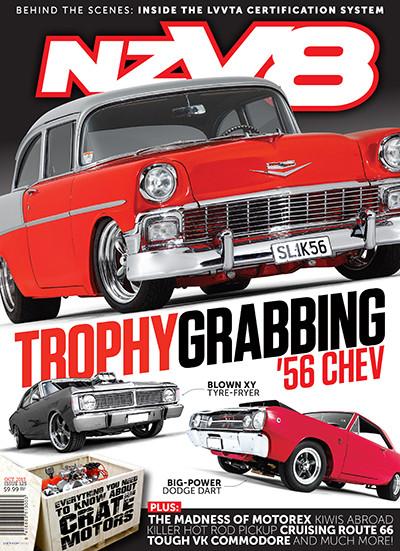With a huge selection available on the market — both from retailers and specialist builders — it’s not always easy shopping for a crate motor. Here’s a little guide on what to look for
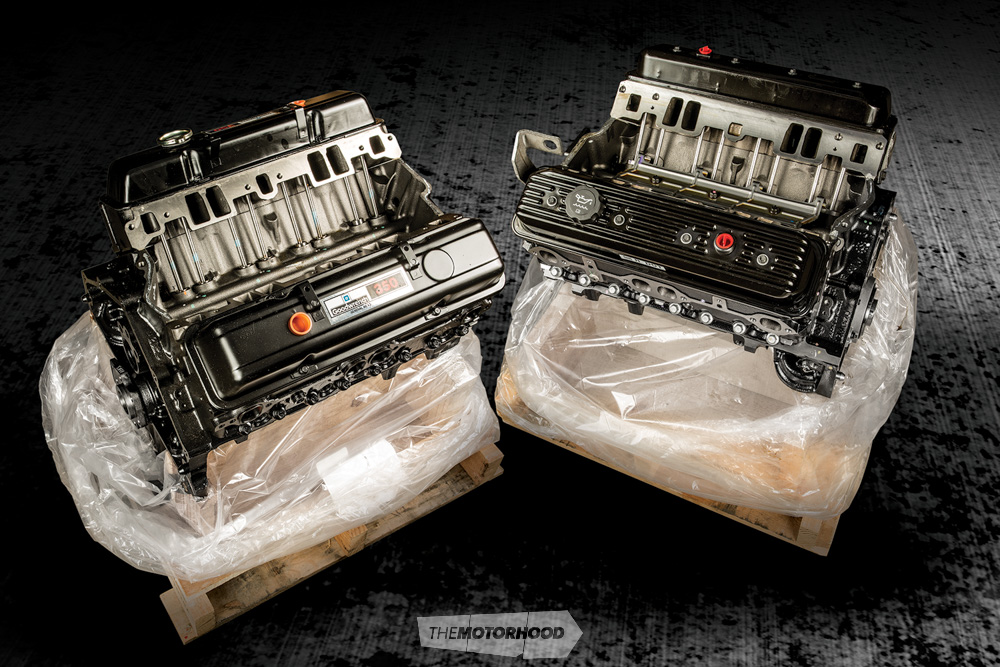
If your engine is knackered or just doesn’t deliver the performance you want, purchasing a crate motor can be the easiest way to rid yourself of that headache. But there are a lot of options available in a marketplace that’s becoming increasingly global, and choosing a crate motor to best suit your requirements can be a daunting task — with large variances in the price, as well as the components, of different crate motors. Here’s a rundown on how you can use their specifications to narrow down your selection.
Completeness
If you’re looking into the market for engines, you may come across terms like ‘short block’, ‘long block’, or ‘ready to run’ — getting your head around these may be frustrating, though. While most crate motors are supplied as fundamentally complete, ready-to-run units, some may also come as long blocks. The differences are listed following.
Short block
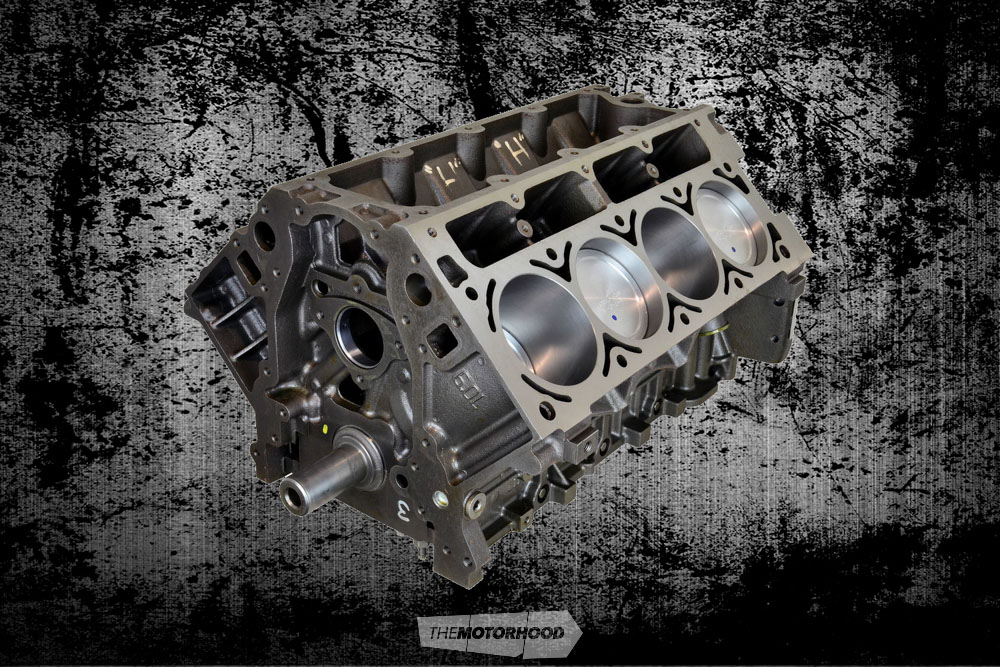
A ‘short block’ is an engine assembly that comes as, essentially, the bare minimum. It includes the engine block, which contains the crankshaft, rods, and pistons. The camshaft and timing gear may be included, but the short block does not include heads, manifolds, or any ancillary components. It may include a sump and pickup. With a short block, it is usually intended that the bolt-on parts of an existing motor will be re-used or all new gear will be installed. They are a great idea if you don’t want to deal with the drama of piecing together a bottom end — which includes checking bearing clearances and crankshaft endplay — but want to fine-tune the engine to your requirements through your own choice of heads, manifolds, and ancillaries.
Long block
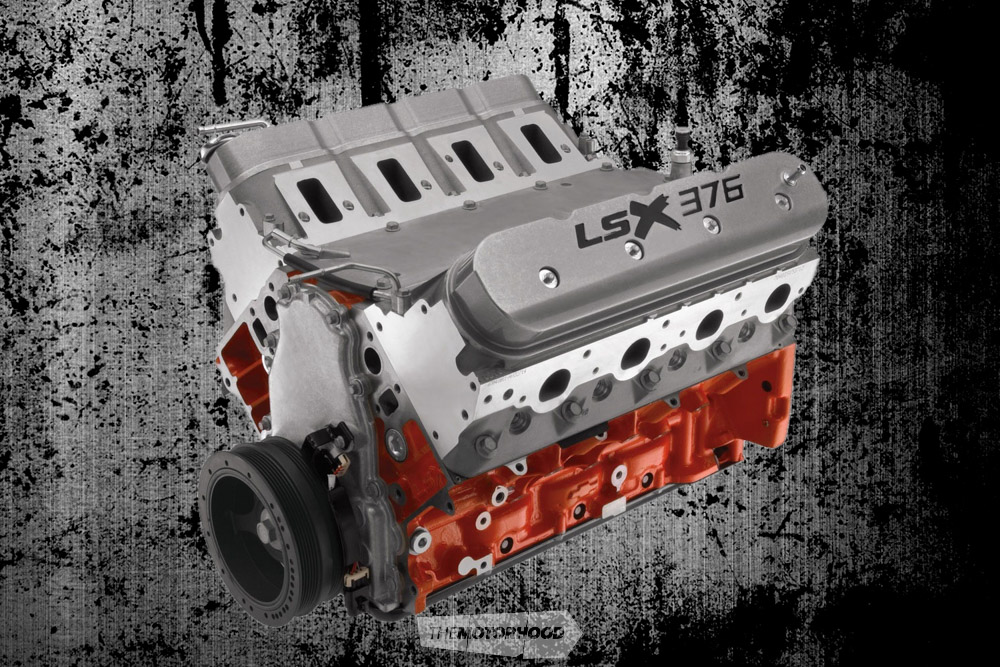
A ‘long block’ is a short block assembly that comes complete with heads. It may include a sump and pickup down below, and pushrods and rockers up top — those that do may even come complete with rocker covers. However, ancillary components will either need to be recycled from an existing motor of the same type or purchased new. A long block is a good choice if you want a degree of flexibility in choosing your engine’s bolt-on parts but can’t be bothered with the fiddly mechanical bits.
Ready to run
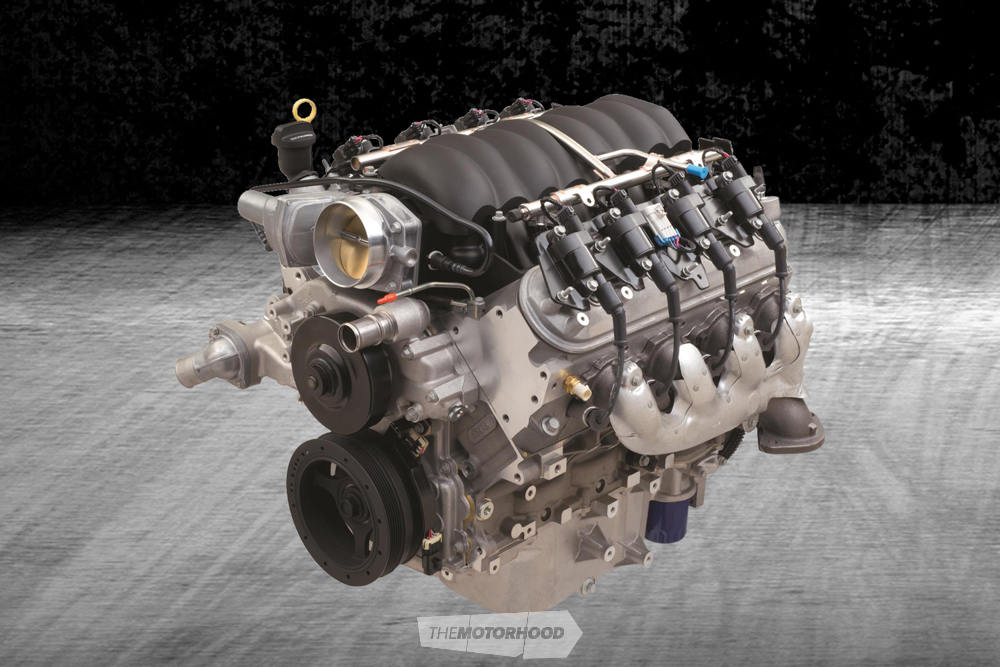
A ‘ready-to-run’ crate motor is exactly that — ready to run. The engine comes fully assembled, complete with intake manifold, carburettor, ignition system, and exhaust manifolds — everything required for the engine to go. Don’t make the mistake of thinking you can drop it straight into your vehicle and get driving, though — it may still require a few ancillary parts, such as alternator, power-steering pump, belts, ignition coil, starter motor, and an exhaust system. What is required will differ between crate engine packages, but a ready-to-run engine is the best option if you want something that you can depend on straight out of the box.
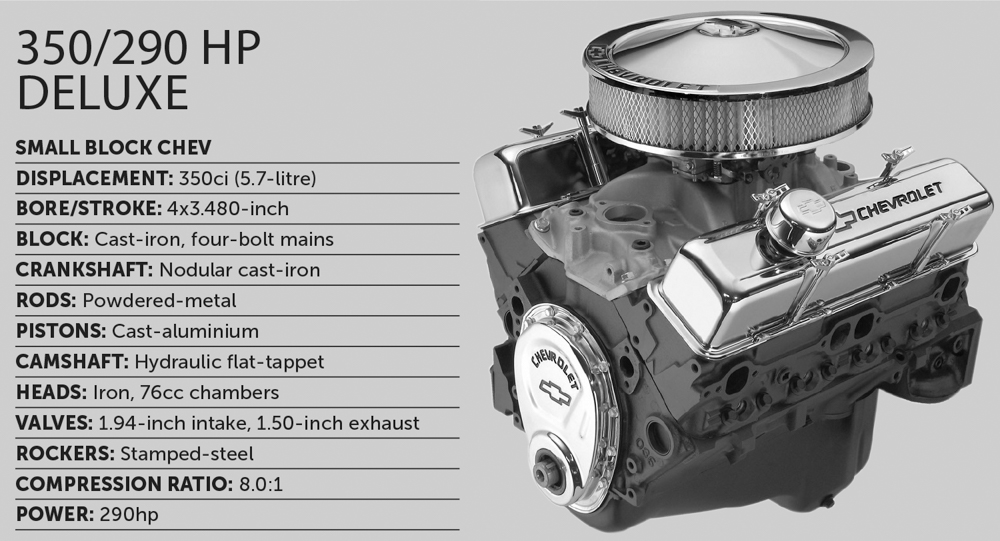
Construction
A lot can be learned about a crate motor just by inspecting the engine’s specifications. Ultimately, you’ll want to choose something that best suits your requirements — there’s no point in spending triple the amount necessary on a 600hp motor when you only want something for cruising. Likewise, there are better plans than buying the cheapest crate motor you can find if you want to drop your 8-71 blower on top, run 12psi of boost, and make quick quarter-mile times.
Engine block
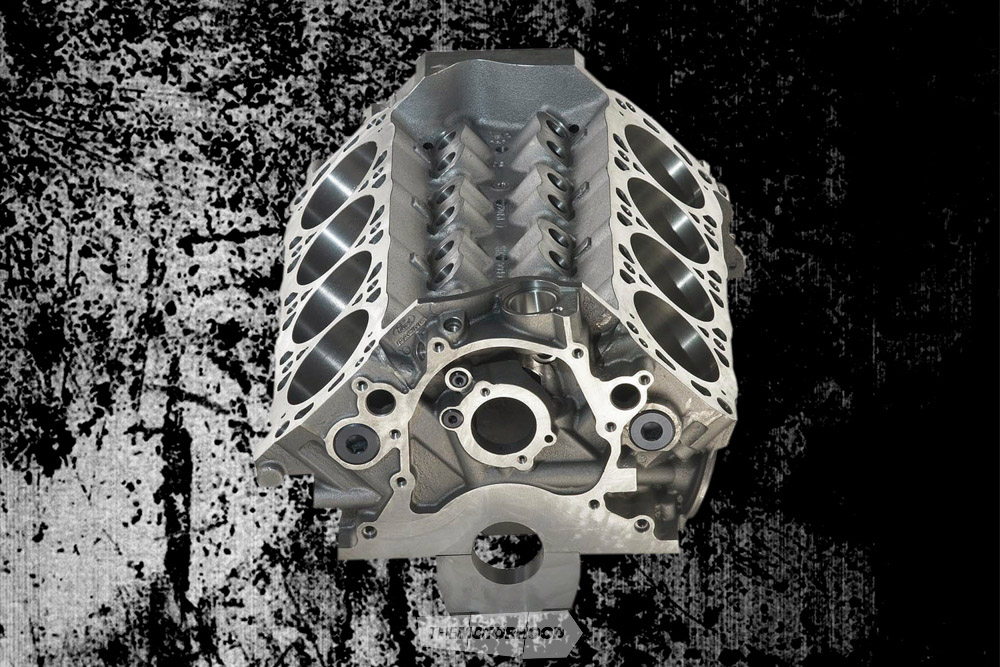
Whatever engine you’re looking at purchasing, one thing is almost a given — the block’s going to be constructed of either iron or alloy. There are costs and benefits to each. Cast iron is far heavier, therefore has the propensity to negatively affect handling characteristics — don’t worry, we won’t even mention fuel economy on these pages. That said, cast-iron engine parts — be they the block or the heads — will almost always be cheaper than the alloy equivalent. Cast-iron blocks are better able to handle the stresses of forced induction than alloy blocks, although we’re talking enormous power and boost levels — upwards of around 1000hp — before this will be apparent. So, in the real world, it boils down to budget versus weight. If budget is the go, cast iron is the one, but if weight is a real concern, go alloy.
Crankshaft
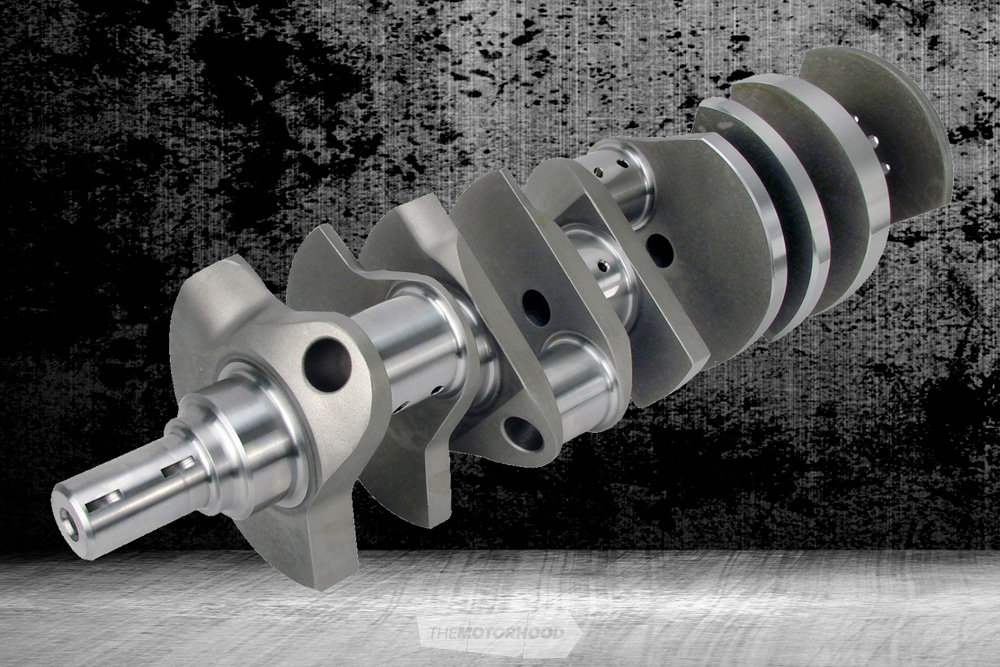
As with everything else inside an engine, crankshafts are not created equal. Nodular cast iron or forged steel? The forging process means that a forged-steel crankshaft is inherently stronger than a cast-iron item, but, in the real world, you’re unlikely ever to require that extra strength if you’re buying a crate motor to drop straight into your ride. Still, if higher engine speeds and extra power — a lot of it, at that — are on the cards, it may be worth considering a forged-steel crankshaft for
peace of mind.
Compression ratio
The compression ratio is usually the most telling indicator of an engine’s performance intention — anywhere below around 9.5:1–10:1 represents a reasonably mild street motor, while anything above the 10:1 mark is likely going to have been designed for a higher performance application. You do need to be careful here, too — a higher compression ratio increases the risk of pre-ignition, also known as ‘detonation’, if fuel of too low an octane rating is used.
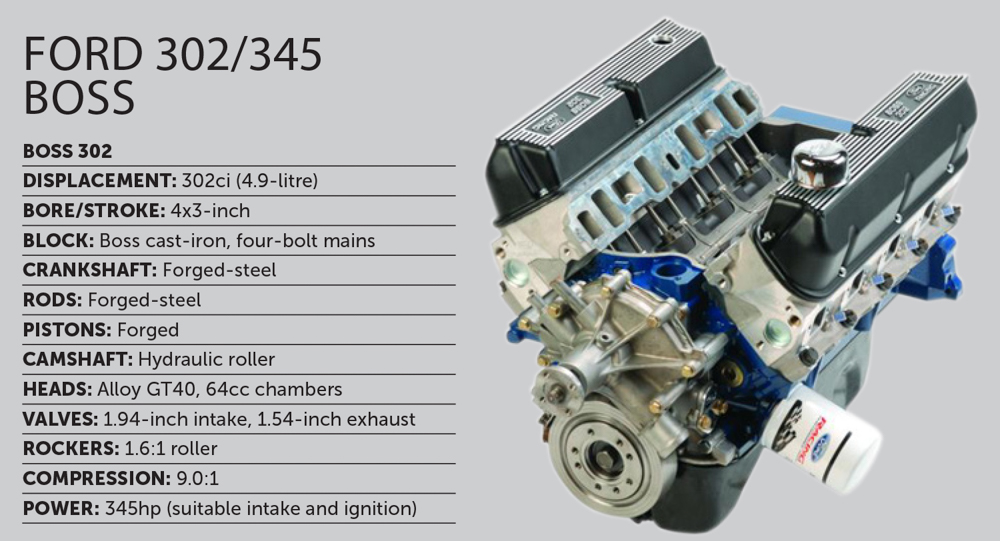
Bear in mind that if forced induction is likely in the future, you may wish to hold back from going too wild on the compression ratio — high compression plus forced induction can turn messy — but you’ll also want to look at the other engine specifications to ensure the crank, rods, pistons, and mains will be sufficient for the power you’re planning to throw at the motor.
Rods
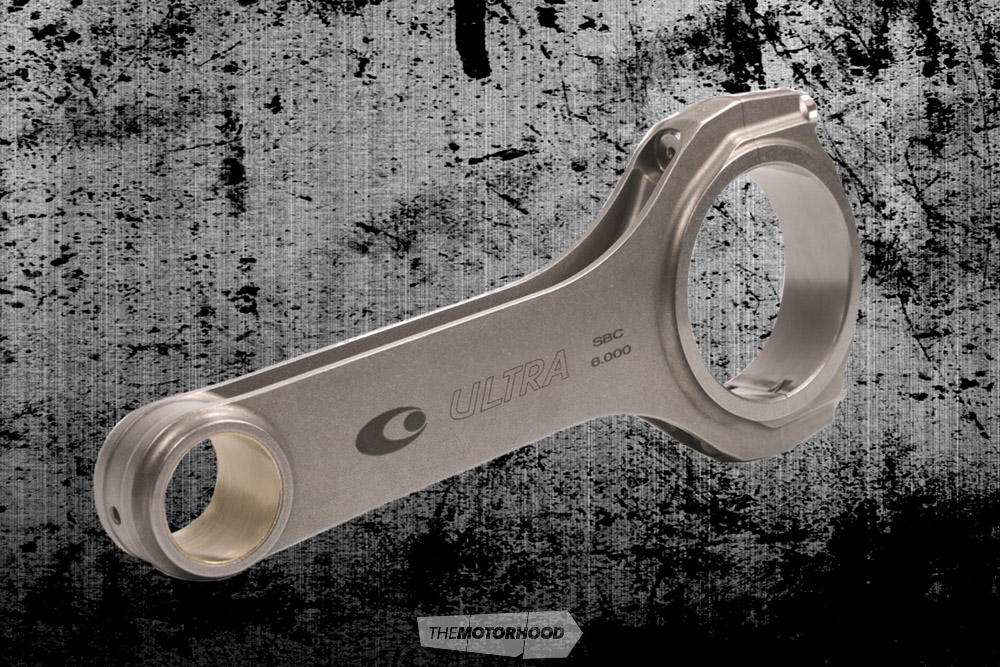
Just like everything else in the bottom end of your motor, there’s a hierarchy to be observed when it comes to the construction of the connecting rods. Factory cast items are generally accepted as being the weakest, although they are completely reliable for low-to-moderate power applications. Nowadays, powdered-metal rods are being used by many OEMs — the base powdered-metal solution is sinter forged into the final rod. This process yields rods that are almost equally uniform in construction and far stronger than factory cast or (conventionally) forged rods.
Aftermarket-style forged H-beam and I-beam rods represent the next step up in strength but are only really necessary under high-power applications — again, the optimal rod material is dependent on what you want to get from the engine.
Pistons
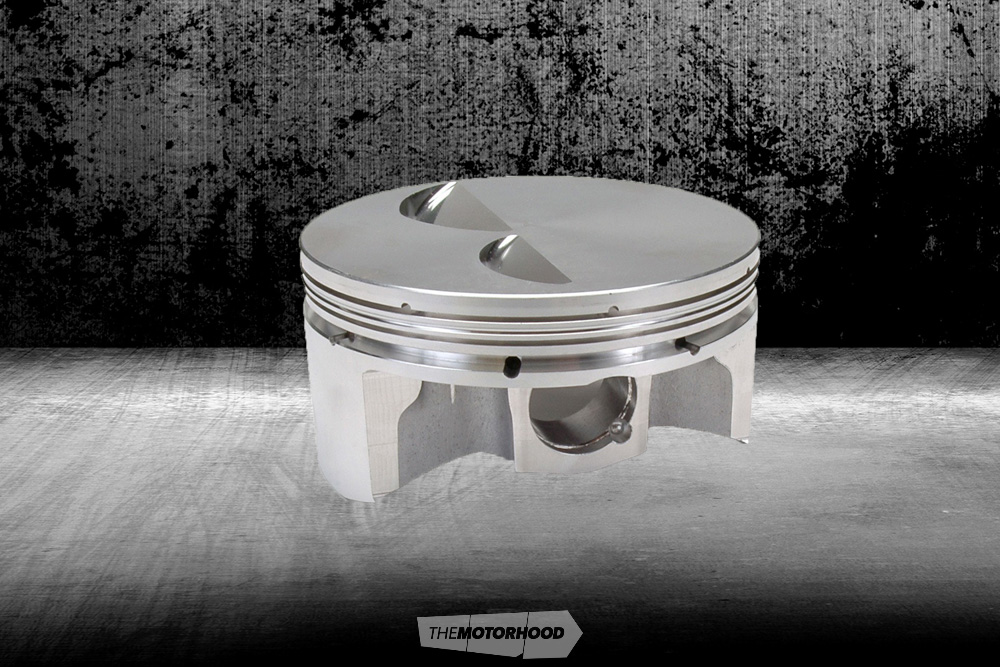
Cast alloy, hypereutectic cast alloy, or forged — where the pistons are concerned, what’s the best? This, like every other component making up the engine, depends on your requirements.
Cast pistons are the cheapest and simplest option — they work fine for low-to-mild performance applications, but are not normally ideal for high-power or forced-induction applications. As they are cast from a mould, low production costs translate to a cheap price, but at a cost — they’re inherently more brittle than forged pistons, and may be heavier, due to increased wall thickness to increase strength.
‘Hypereutectic’ pistons are essentially cast alloy pistons, manufactured from an aluminium alloy with an increased silicon concentration. Hypereutectic alloy experiences less thermal expansion than standard aluminium alloy, allowing for tighter tolerances and improved sealing.
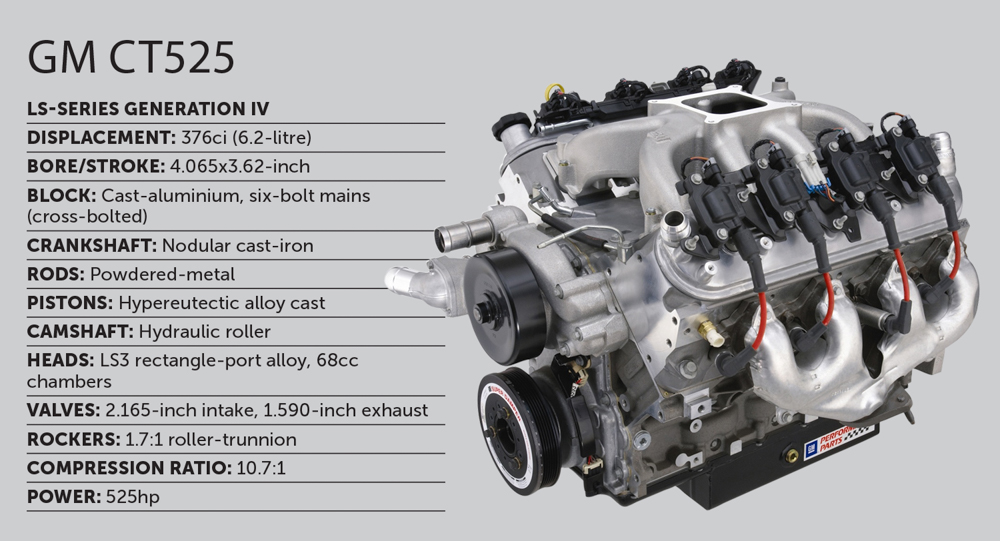
Forged pistons are produced through forging — the molten alloy is forced into the mould, which eliminates porosity, increasing the inherent strength of the piston. They are better able to withstand higher engine speeds, heat, and detonation than conventional cast pistons. While no piston is bulletproof, forged pistons are a worthwhile choice if big power is on the agenda — although they do cost more than the equivalent cast piston.
Camshaft
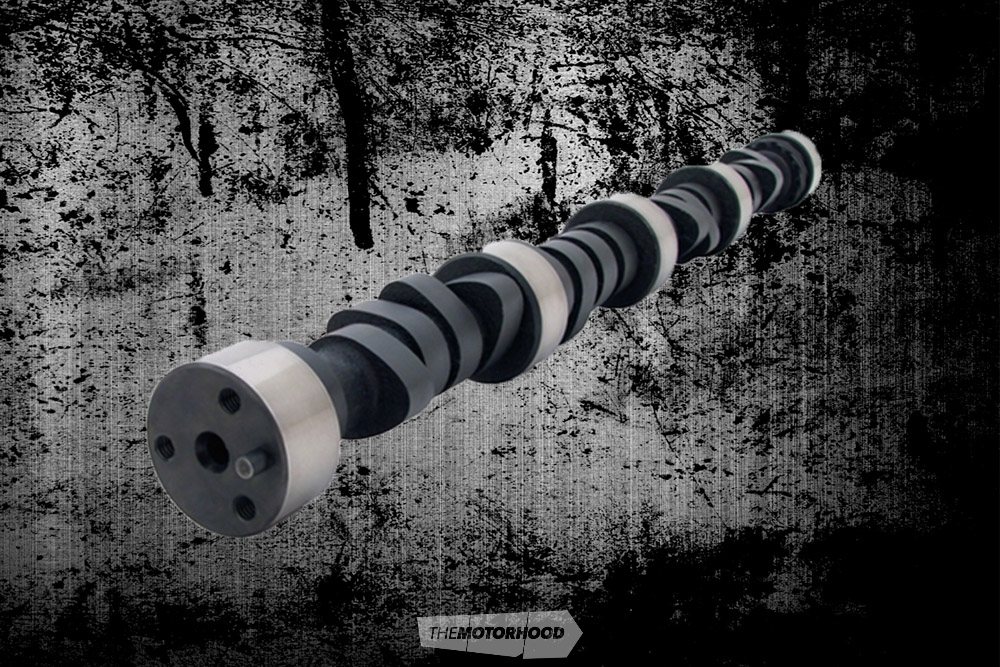
Another telling part of an engine’s performance potential can be found in the camshaft, and you don’t even need to understand the cam specs — although that always helps. No, all you need to know is whether the engine is running a roller cam or a flat-tappet cam. Generally, roller cams are indicative of an engine with higher performance potential — the lifters utilize a roller wheel to allow for less valvetrain friction, as well as allowing for more aggressive camshaft profiles than the equivalent flat-tappet camshaft, without the risk of damage to either the lifter or the cam lobe.
The camshaft specs will usually also detail whether hydraulic or solid lifters are used. Hydraulic lifters are far more user-friendly, with quiet operation and low maintenance requirements, but are only good up to certain engine speeds — generally accepted as being around 6500rpm. Solid lifters, on the other hand, are great for higher engine speeds, especially with a roller cam, but they make more noise and will require periodic checks and adjustments for valve lash.
Main bearing caps
It’s a debate that has raged for decades, through numerous generations of hot rodders and engine builders — are four-bolt main bearing caps rather than two-bolt mains really necessary in performance applications? The logic behind four-bolt mains makes a lot of sense — the extra clamping force afforded by an extra pair of main cap bolts should, theoretically, support the crankshaft better in high-power applications and at high engine speeds. However, two-bolt mains will always be cheaper.
Rockers
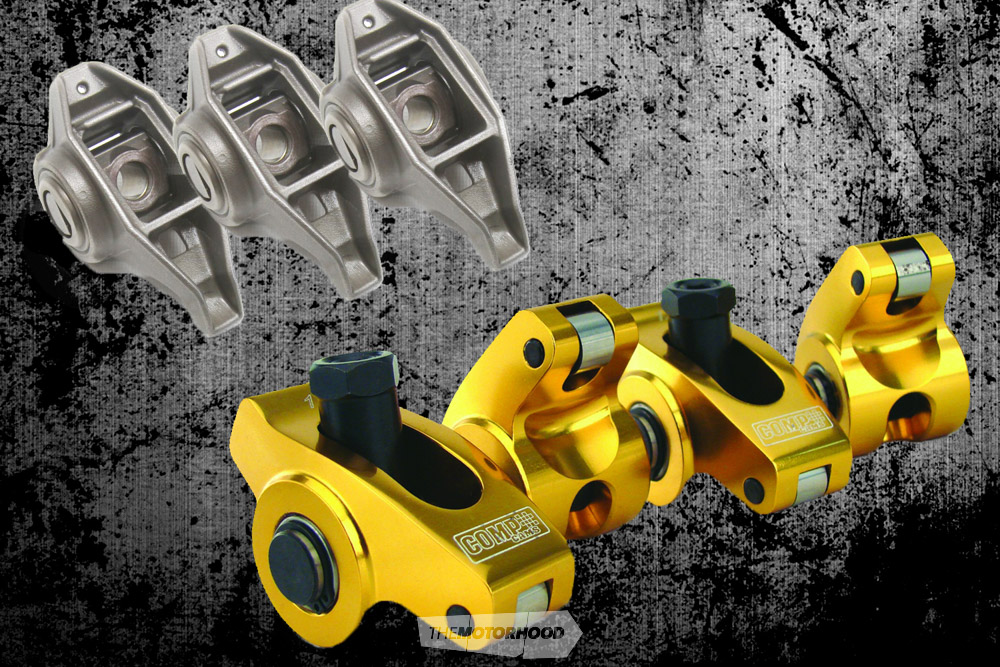
The rockers are another area that can be quite easily used to identify the intended application of an engine. Stamped-steel rockers are your run-of-the-mill items designed to get the job done. They aren’t designed for high engine speeds or high-lift camshafts, and this is reflected in the fact that — for the most part — factory-style stamped-steel rockers will run a sedate ratio in the ballpark of 1.5:1. This means that, for every increment of camshaft lift, valve lift is 50-per-cent greater. As this is a modest ratio, roller-trunnion or full-roller rockers can offer a performance increase by default, simply by having a higher ratio.
Roller-trunnion rockers are similar in style to stamped-steel rockers but pivot on a roller trunnion. While a stamped rocker literally ‘rocks’ on its base, a roller-trunnion rocker pivots on a trunnion. This reduces friction and opens propensity for greater valvetrain lift and a greater rocker ratio. Hence, roller-trunnion rockers are indicative of slightly higher–than-mild performance. Roller rockers represent the pinnacle of rocker arms, as far as crate motors are concerned. In addition to the roller trunnion, they also have a roller tip that makes contact with the top of the valve stem — friction is greatly reduced, freeing up potential for higher engine speeds and power.
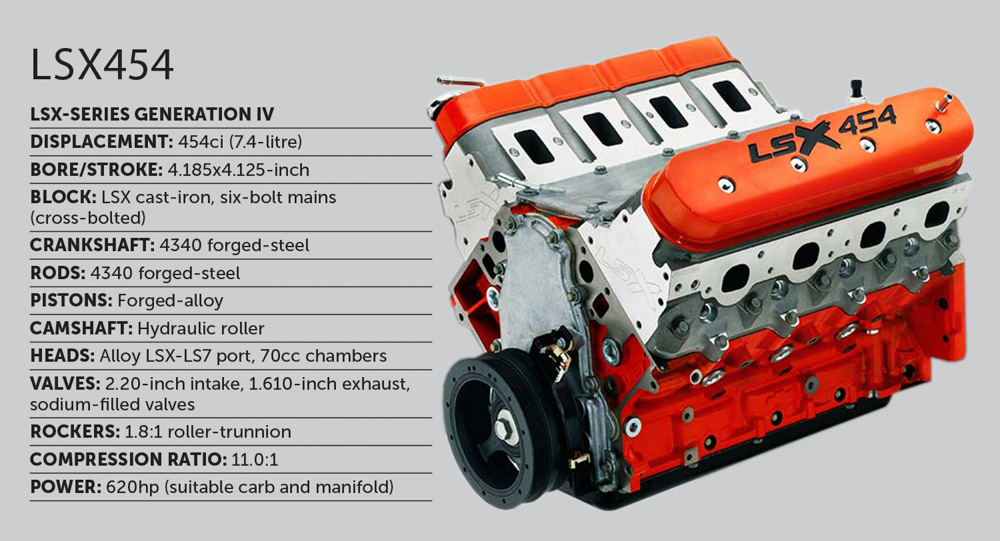
This article originally appeared in NZV8 issue No. 125 — to get your grubby mitts on a copy of the print issue, click the cover below





